First tram routes revealed in county transport plan
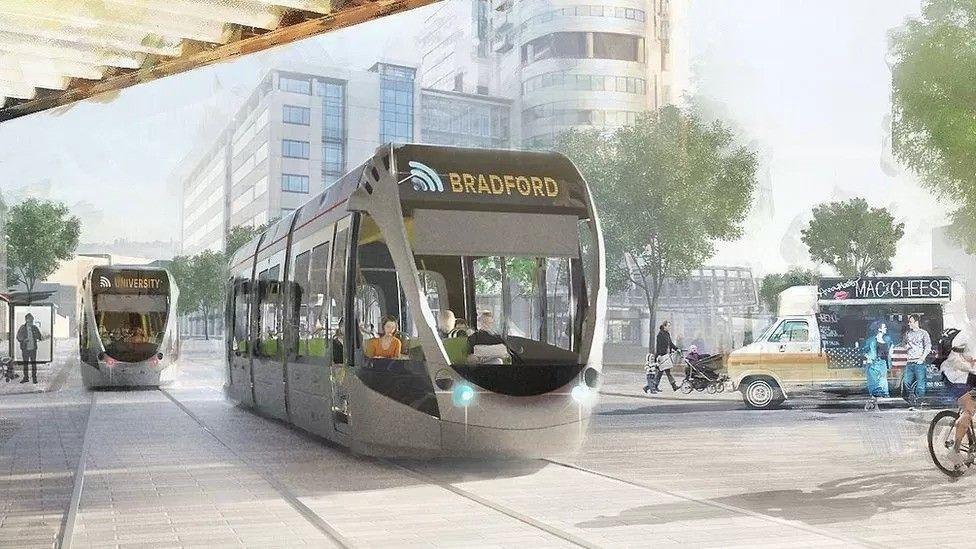
Under the plans, trams will connect towns and cities across West Yorkshire
- Published
Potential routes for West Yorkshire's long-awaited mass transit system have been unveiled.
The scheme, which if completed will see trams run between towns and cities in the region, has been promised by West Yorkshire mayor Tracy Brabin.
The first line, announced on Monday, would run between Leeds and Bradford, while the second would link the centre of Leeds with the White Rose Shopping Centre in the south of the city and St James' Hospital in the north.
Several options for how and where these lines will run exactly have been put forward and will now go out to public consultation.
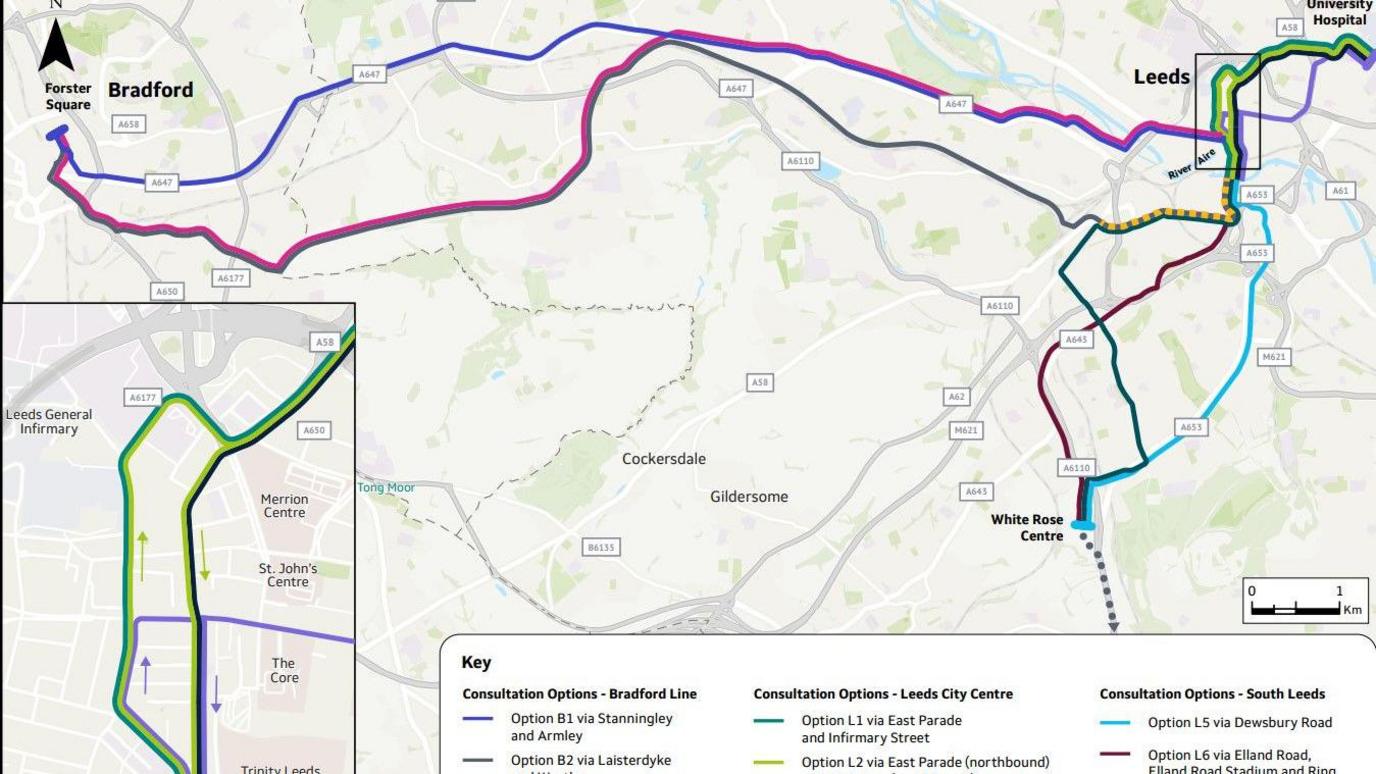
The scheme is provisionally designed to link Leeds with Bradford and Leeds city centre with the White Rose Shopping Centre
Referencing Sunday night's disappointing result for the England football team at a press conference on Monday morning, Ms Brabin said: "Football may not be coming home, but mass transit is."
She has promised to have spades in the ground on the scheme by 2028, following decades of failed schemes for Leeds and the surrounding area.
No proposed tram stops have been announced as yet.
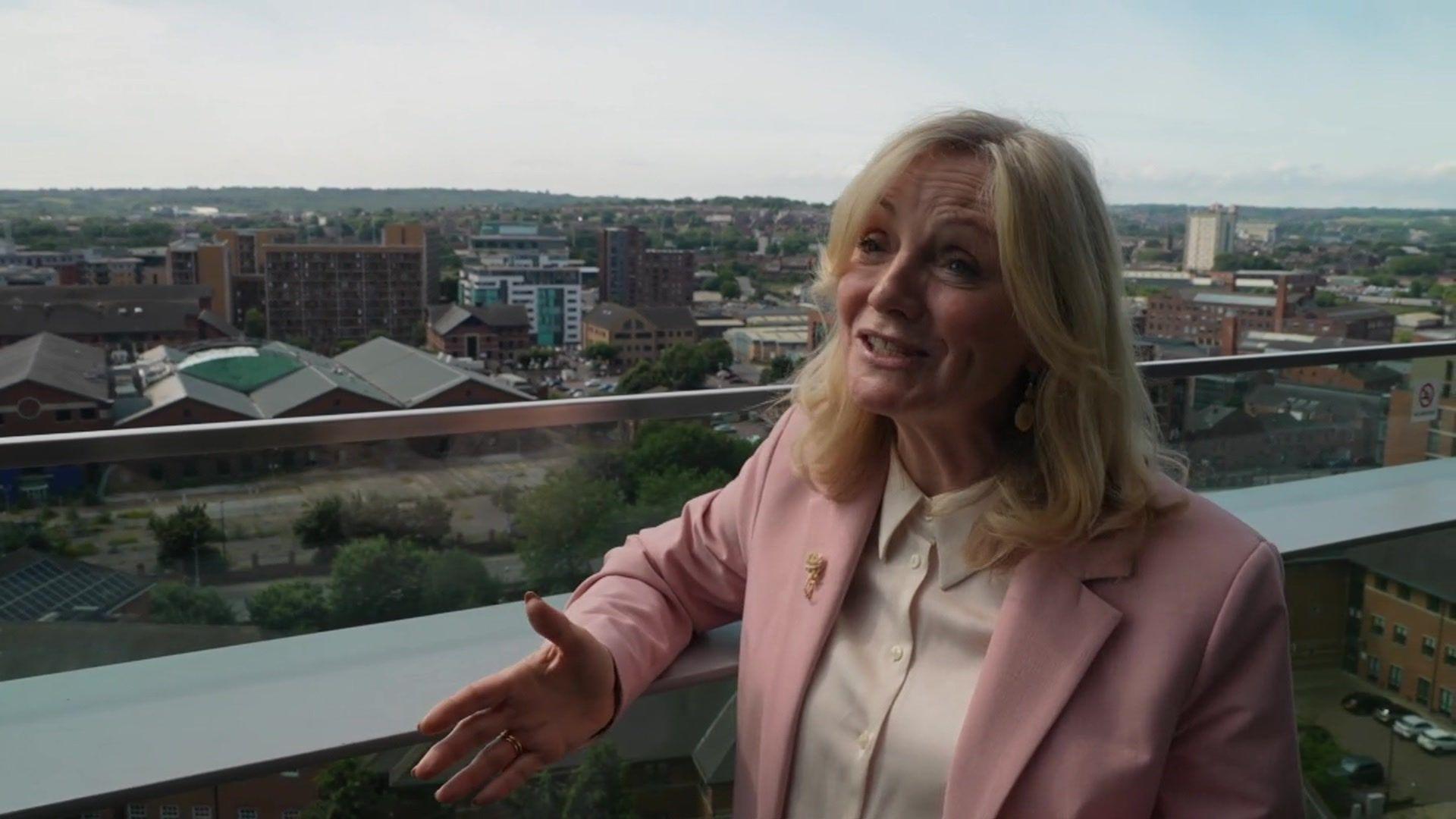
Ms Brabin said the system "will succeed" despite decades of failure for previous mass transit schemes
Speaking to BBC Look North, Ms Brabin said that Leeds and Bradford had been chosen for the first two routes as they were "our biggest city centres and they are the worst connected".
She also said she believed the new Labour government was behind the scheme, following talks with chancellor and Leeds West MP Rachel Reeves last week.
Ms Reeves herself had said that private sector funding was needed to help build the tram infrastructure.
Ms Brabin said: "It's important we start with a spine and then we can build from there across West Yorkshire.
"This will succeed. I know people are cynical, but this is a West Yorkshire-wide project and it has the buy-in of all our local authority leaders and chimes with the ambitions of this new government."
"They're on a growth mission. I believe they're with us and I'm confident for the future of West Yorkshire."
Urging people to take part in the consultation, external, she added: "We want it to be perfect for you, your business and your family."
Route options unveiled
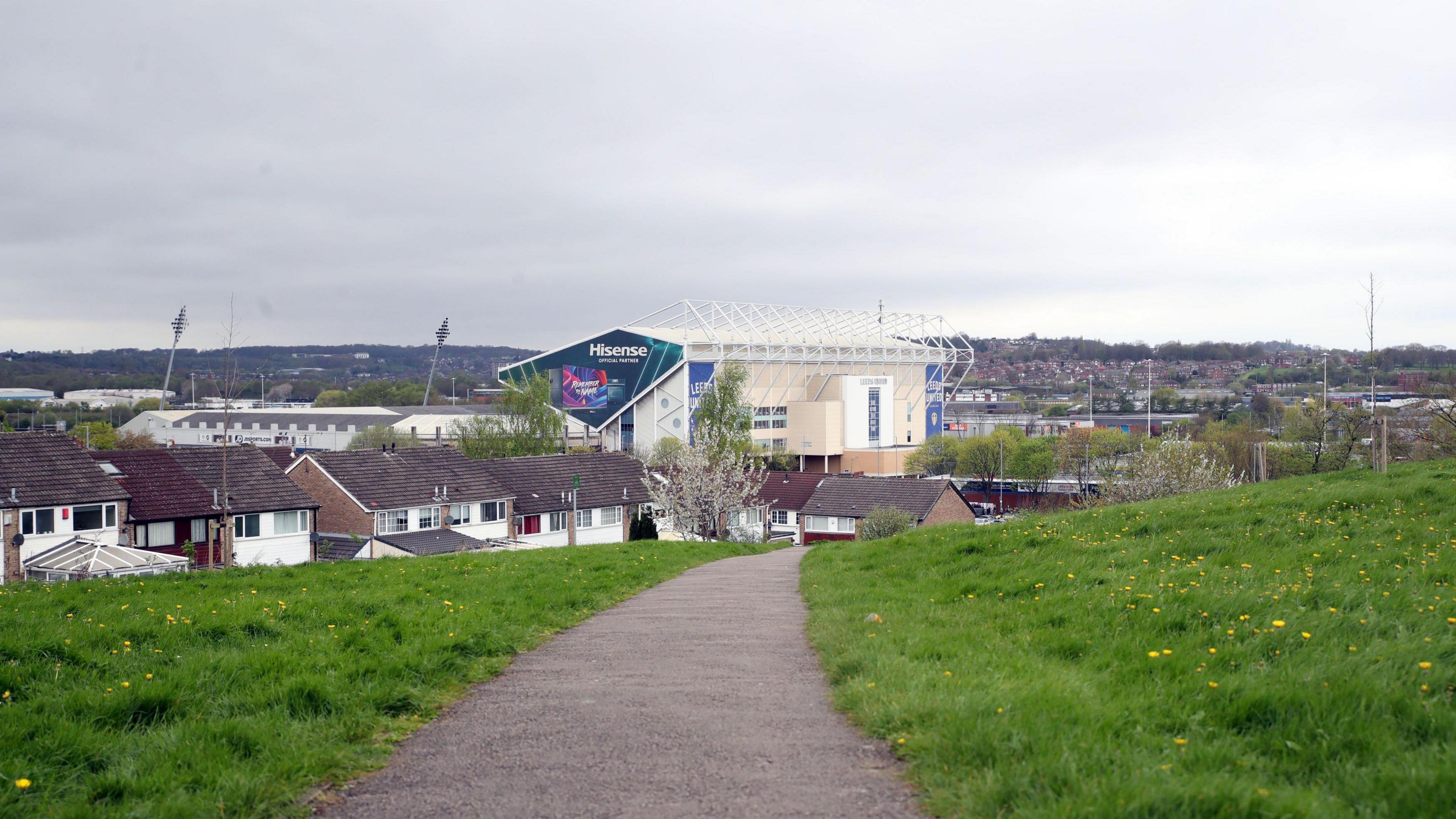
Elland Road football ground is a potential stop under two of the three route options linking the south of Leeds into the scheme
Three potential routes for the Leeds-Bradford line would see the trams run via either:
Stanningley and Armley
Laisterdyke and Armley
Laisterdyke and Wortley
Four potential options for where they would run from Leeds city centre are:
via East Parade and Infirmary Street
from East Parade (northbound) and Park Row (southbound)
from Cookridge Street and Park Row
from Regent Street and The Headrow
Running into south Leeds, the trams will travel either
via Dewsbury Road
via Elland Road, Leeds United's football ground and the ring road in Middleton
via Gelderd Road, Lowfields Road, Leeds United's football ground and Old Lane
Tubes, trams and trains - a brief history of failed Leeds transport schemes
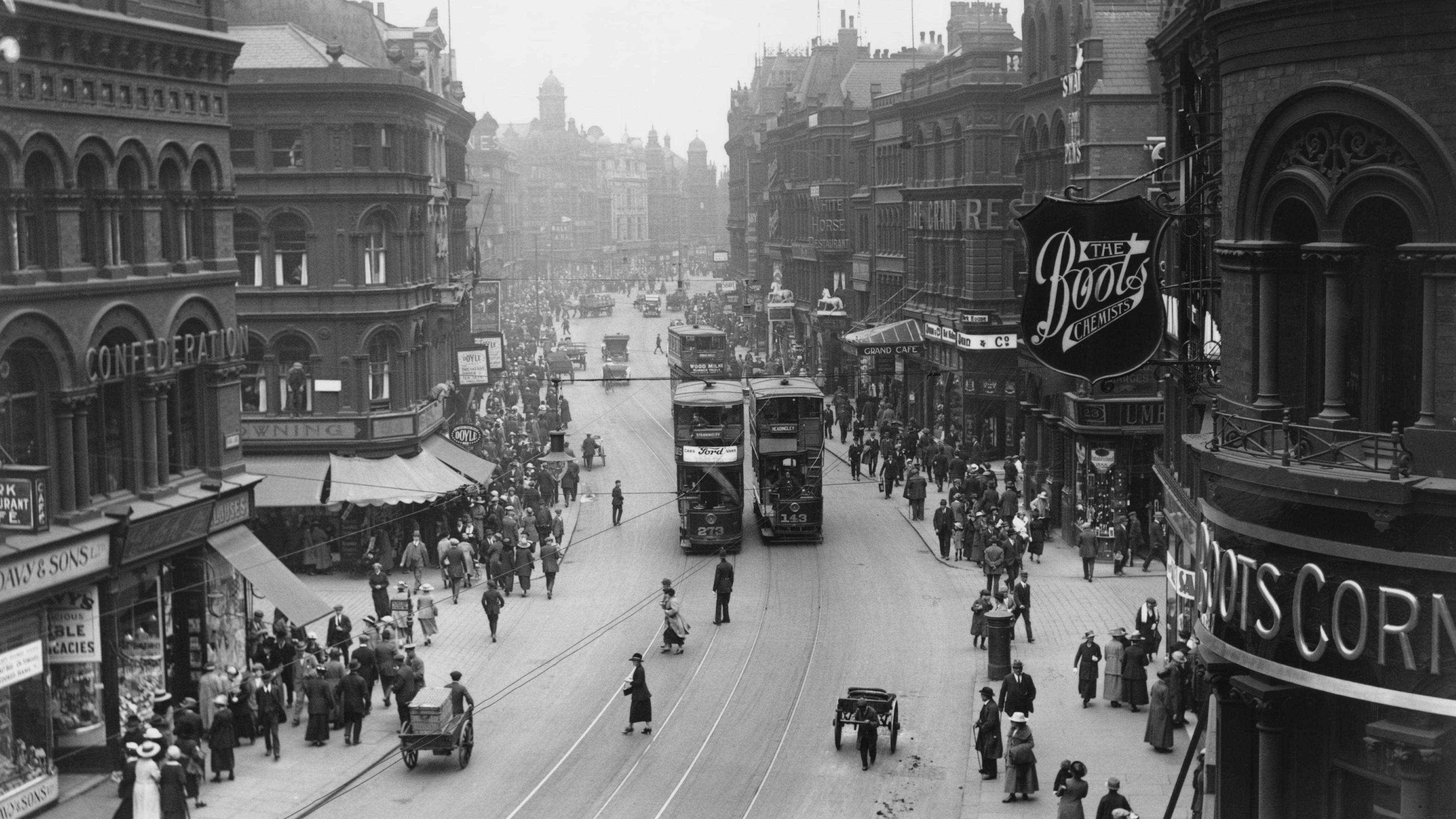
Leeds's tram system was built in the Victorian era but abandoned in the 1950s amid increasing car use
Home to 2.5m people who are mostly reliant on buses, trains and private transport to get around, West Yorkshire is one of Europe's largest metropolitan areas without a mass transit system.
There have been several attempts at developing such a system in Leeds, but most have hit the buffers amid the complexities and expense of building one.
The city did have a Victorian tram system linking its vast suburbs until the 1950s, but this was closed down as car use took off. It was a decision much criticised with the benefit of hindsight by modern day leaders, as cities like Sheffield, Manchester and Edinburgh built successful tram systems themselves.
In the 1930s, a Tube-style underground system, which would have been built around a city centre subway station, was conceived. But with post-war austerity biting, the scheme was canned in 1945.
In the 1960s, a network of express buses, which would have linked Leeds with Bradford and Wakefield was proposed, but similarly, this ultimately came to nought.
Perhaps most infamously, 'Supertram', put forward in the 1990s, was the next major scheme designed to better connect the city in the form of light rail. Originally backed by the New Labour government and due to start in 2004, spiralling costs too saw this project cancelled.
The most recent iteration was the Trolleybus scheme, which after four years of back-and-forth was rejected by the government in 2016, who said the scheme was "not in the public interest".
Follow BBC Yorkshire on Facebook, external, X (formerly known as Twitter), external and Instagram, external. Send your story ideas to yorkslincs.news@bbc.co.uk, external
Analysis by Spencer Stokes, BBC Look North business and transport correspondent
Two months after being re-elected, the mayor is wasting no time progressing plans for a tram system in West Yorkshire.
Details on individual routes means local communities can now feed into the consultation process about exactly where tram lines will be installed, and where individual tram stops might be.
There will be a final decision next year on precisely which routes will be chosen, before a transport and works act is submitted to the government.
This is the legal process that allows the mayor to access the estimated £2.5bn of funding that will be needed to get construction work under way.
That money still hasn’t been signed off by the Treasury.
Related topics
Related stories
- Published7 March 2024
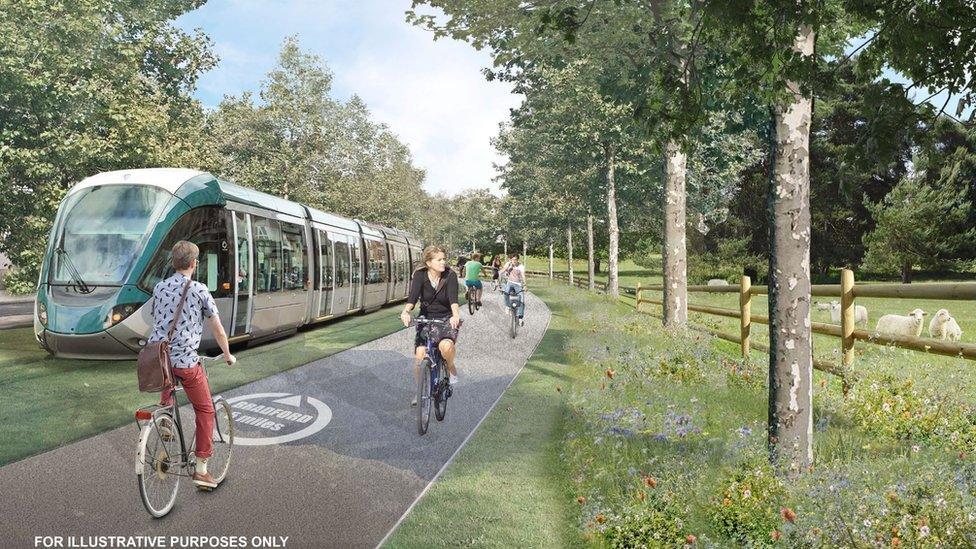
- Published14 March 2024
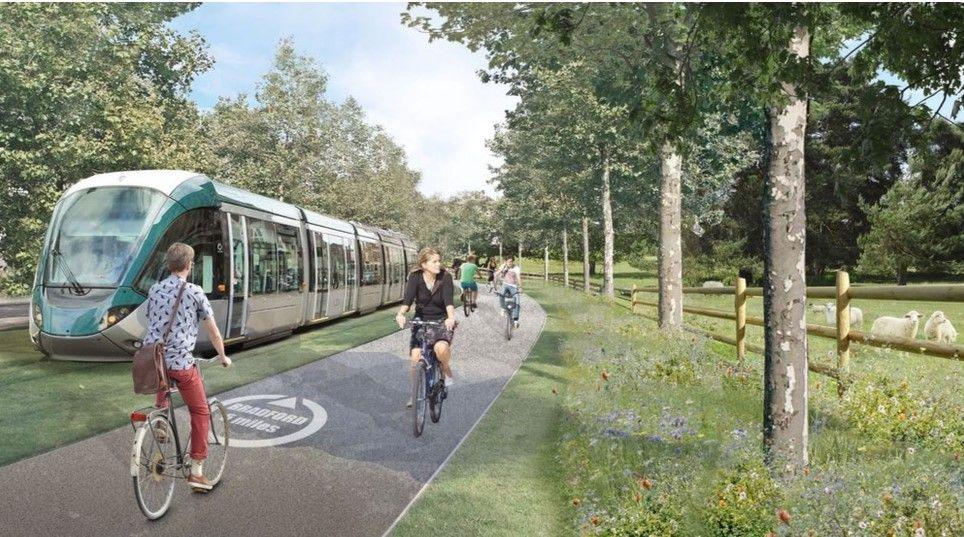
- Published14 March 2023
